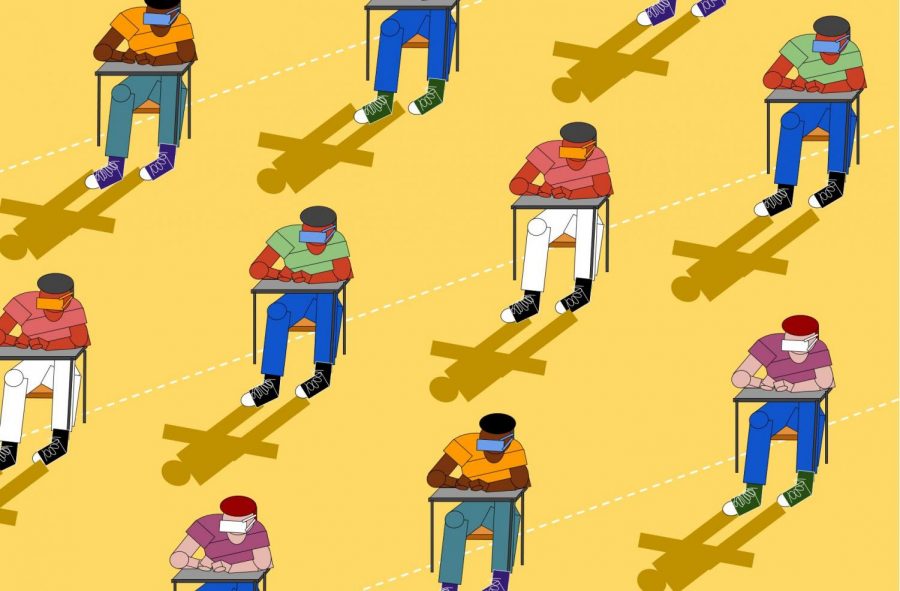CRLS Should Take the Lead from Private Schools: Go Hybrid
October 9, 2020
Cambridge Rindge and Latin School (CRLS), like many public schools all over the country, has decided to remain closed for the beginning of the 2020-2021 school year. Teachers unions for public schools have championed this movement across the nation. Protecting teachers and students alike is a critical issue during a pandemic. However, an unintended consequence of remote learning is that it worsens the equity gap in education between rich and poor students, hurting public school students.
It is clear that online learning isn’t a viable substitute for in-person learning for a number of reasons. First off, students find it more difficult to engage in and stay focused on classroom activities from a remote setting. (Also, as a TA for a calculus class at CRLS, I can say from personal experience that students collaborate with each other much less than they would in person. Most online breakout rooms are silent.) Secondly, it’s impossible to guarantee that all students will have the same equal access to resources as they did in the classroom. For example, different students might have varying access to reliable internet, consistent and quiet study spaces, office supplies, etc. Simply put, it will never be possible to fully replicate the high school experience online. In fact, last June, the Wall Street Journal (WSJ) wrote, “Preliminary research [on remote learning] suggests students nationwide will return to school in the fall with roughly 70% of learning gains in reading relative to a typical school year, and less than 50% in math, according to projections by NWEA.” This means that schools that go back in person sooner will give their students a significant advantage compared to schools that stay remote.
The challenge of bringing students back is not a simple one (particularly in urban areas). Educators and administrators have to consider how to spread out students in the classroom, how to ensure that kids really will wear masks, and how to handle contact tracing and deal with exposure issues that will inevitably come up. All of these factors have made teachers unions and city governments (rightly) reluctant to move back from online school. However, some districts are still making an effort.
While CRLS remains closed, many private schools, including Buckingham Browne & Nichols School, which is also in Cambridge, have found ways to stay open. BB&N senior, Paolo Cima, told the Register Forum that his school is employing a hybrid model, “On Monday and Tuesday the juniors and seniors are at home, and on Thursday and Friday we go to the actual school … We have online classes on Monday and Tuesday, and Wednesday is for clubs and sports.” BB&N has taken additional steps such as making certain hallways one way and spreading out classrooms to facilitate a safe return. In comparison, CRLS has fewer than four hours of online classes four days a week and no official system to handle extracurricular activities or encourage students to stay involved in the school community. Since private schools, like BB&N, do not have to reckon with teachers unions, they are capable of making their own evaluations of how to handle COVID-19 based on their varying resources. If teachers and politicians insist that there is still no safe way to bring (at least some) kids back to CRLS on a regular basis, then Cambridge needs to seriously reevaluate 50 minute classes which are clearly an inadequate substitute for school. A hybrid schedule and a return to a normal length school week would certainly be a step in the right direction.
The main factor preventing public schools from re-opening has been teachers unions who have refused to let teachers go back to the classroom and even advocated for moving the start of the school year back (in Massachusetts, for example, there has been no initiative to make up this lost time). Granted, the pandemic is a serious threat and teachers see dozens of kids each day, but the result of the current remote learning plan is clear: Students who can afford to go to private schools are not suffering the deleterious effects of remote learning, or as the WSJ calls it, “pandemic slide.” Meanwhile, millions of public schools find themselves at the mercy of teachers unions who are leaving students behind.










